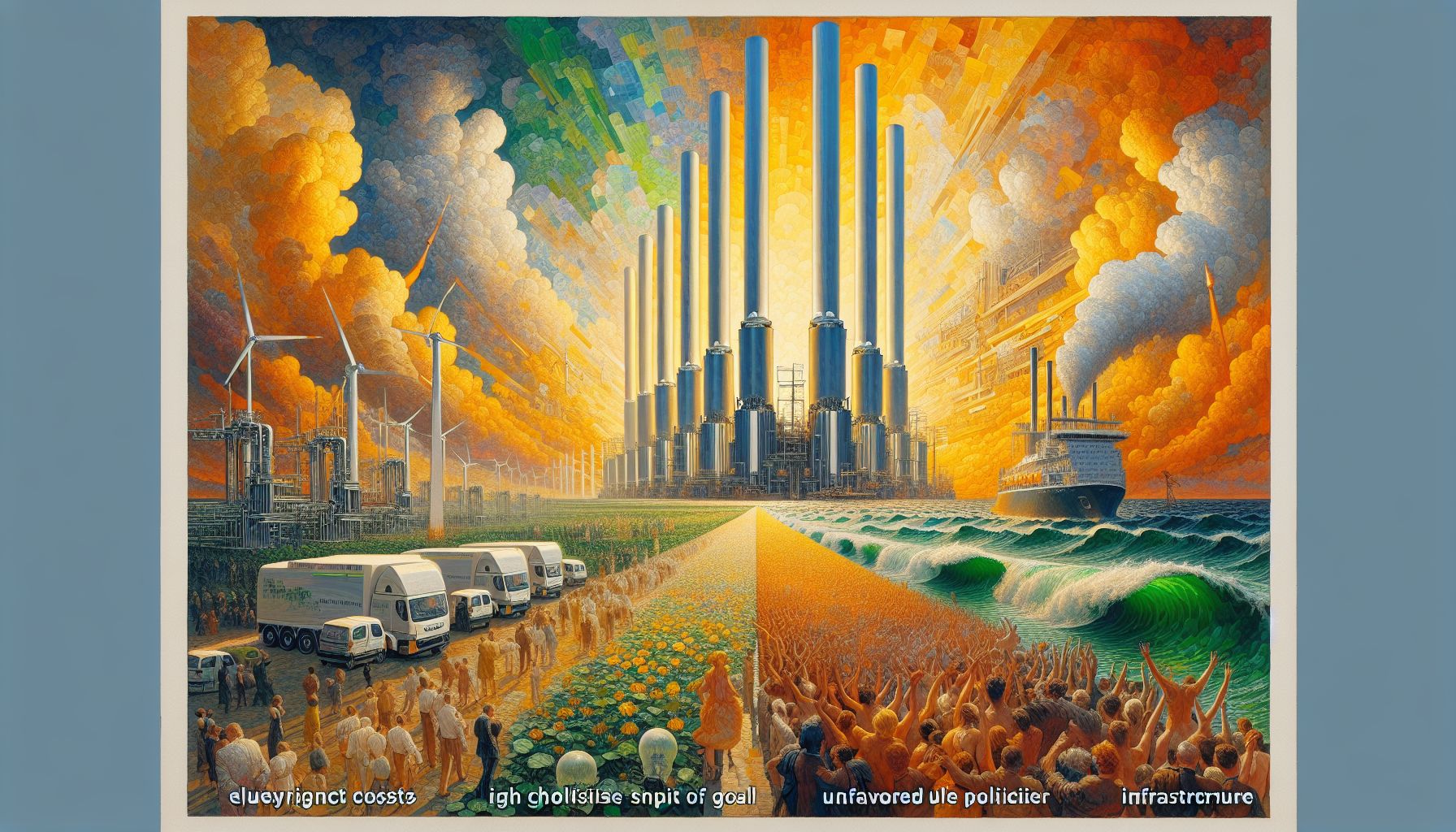Netherlands Accelerates Green Hydrogen Projects Despite Challenges

Rotterdam, Monday, 12 August 2024.
The Netherlands is ramping up green hydrogen initiatives to combat climate change, aiming for 500 MW of electrolyzer capacity by 2025 and 3-4 GW by 2030. However, high costs, policy uncertainties, and infrastructure limitations pose significant hurdles to development.
Financial Support and Infrastructure Development
The European Commission has approved a financial support package of €998 million ($1.08 billion) to bolster the Netherlands’ green hydrogen production. This funding aims to facilitate the construction of at least 200 MW of electrolysis capacity through a competitive bidding process set to be completed in 2024. Projects must have a minimum capacity of 0.5 MW to be eligible for the tender, with grants covering up to 80% of costs over a period of five to ten years[1].
Policy and Market Transparency
One of the major challenges in the development of green hydrogen projects in the Netherlands is the lack of market transparency. The current hydrogen market is predominantly composed of locally produced gray hydrogen, and there is insufficient information about traded prices and volumes. To address this, the report by Invest-NL and Common Futures highlights the need for a transparent market structure, which would enable efficient pricing and attract new investors[2].
Strategic Goals and Collaborations
The Netherlands has set ambitious goals to achieve 500 MW of electrolyzer capacity by 2025 and 3-4 GW by 2030. This aligns with broader European initiatives, such as the European Green Deal, which aims for no net emissions of greenhouse gases by 2050. To meet these targets, the Dutch government is focusing on removing short-term obstacles through subsidy instruments and blended finance constructions[3].
International Cooperation and Technological Innovation
International cooperation plays a crucial role in the Netherlands’ green hydrogen strategy. The European Commission has also approved a joint state aid package worth €1.4 billion ($1.5 billion) for hydrogen technologies, involving multiple EU countries, including the Netherlands. This package supports 11 companies for 13 innovative projects, with a total expected investment of €3.3 billion ($3.6 billion)[4]. Furthermore, Dutch companies are repurposing natural gas pipelines for hydrogen networks, contributing to the country’s hydrogen infrastructure[5].
Long-term Impact and Future Prospects
Despite the challenges, the Netherlands is well-positioned to become a frontrunner in the green hydrogen market. The country aims to avoid approximately 55 kilotons of CO2 emissions annually until 2030, significantly aiding its climate targets. The northern Netherlands, often referred to as the ‘hydrogen valley’ of Europe, is leading in hydrogen-based energy initiatives, demonstrating the country’s commitment to a sustainable future[6].

